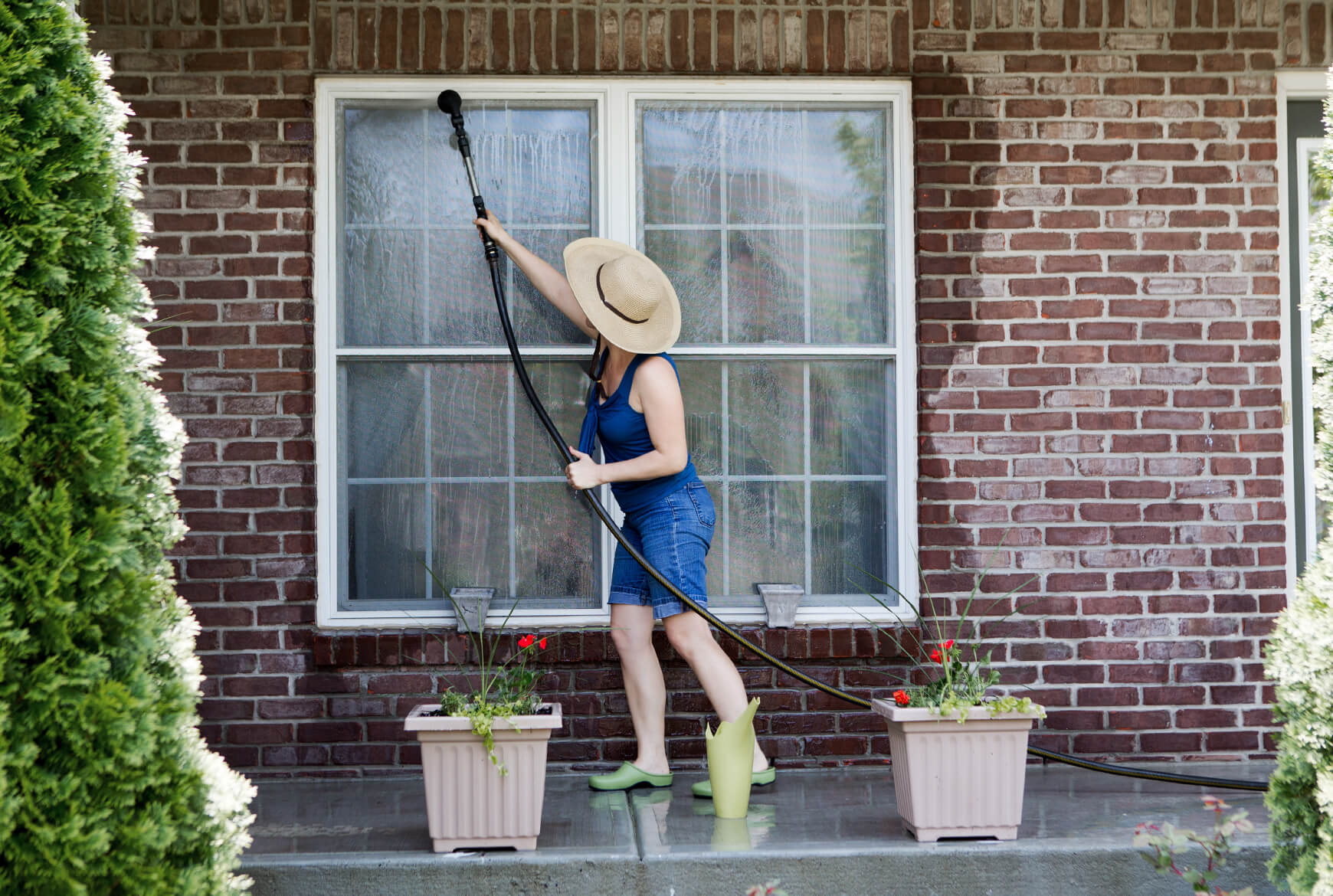8 spring home maintenance tips

The season is called spring because it puts the spring back in your step (OK, not really). But, nonetheless, many of us do feel rejuvenated at this time of year and so why not use this newfound energy to show some love to your home. A few checks and some simple maintenance should get your home ready for the summer. Roll up your sleeves and follow this guide!
1. Check the roof
Your roof doesn’t have it easy: hot summer sun, winter snow and ice, harsh weather. It’s also where water can seep in, especially during the spring thaw.
Check it for damage and signs of potential problems. Avoid going up on the roof: use binoculars to inspect from the ground or use a ladder (have someone spot you to ensure your safety).
What to look at:
- The shingles
If they are curled, chipped or cracked, it’s probably time to replace them. - The structure
Is it showing signs of wear or weakness? - The chimney
Does it appear to be in good condition? Make sure to check the flashing and grouting. - The trees
Grab a trimming tool or saw to lop off branches that are touching the roof.
Insulation
Your home loses up to 30% of its heat through the roof. When you see icicles hanging off the roof, it’s probably a good idea to check the attic space to see if your insulation is lacking.
Look for:
- Mould or mushrooms
- Signs of water after heavy rain
- Signs of humidity
- Missing or damaged insulation
When in doubt, call a specialist for an evaluation.
2. Check the eavestroughs and downspouts
Remove dead leaves and other debris (shingle fragments, helicopter seeds, ice, etc.).
Is the water flowing down the spout? This is crucial in preventing water seepage. To make sure your gutters are working properly, pour water in them. Make sure the water flows away from the foundations. If the water stagnates near your foundation, it can slowly seep in because concrete is porous—which can lead to cracking.
One last thing! Make sure the gutters, the downspouts and leaf guards (if any) are firmly attached.
3. Check the foundation and window wells
Inspect the entire foundation to make sure it made it through the winter.
Small cracks probably won’t cause seepage, but it’s best to repair them—an easy DIY fix. However, when you see long cracks that extend below the ground, call the specialists to determine the source of the problem and correct the situation.
Take a look at the window wells too. Remove snow and leaves because they can retain moisture.
4. Check the siding
Was your siding damaged over the winter? If your outside walls are made of brick or stone, check to see if any are cracked or chipped. Inspect the mortar.
If your outside walls are made of wood, vinyl or another engineered product, check for cracks, breaks and discoloration?
It’s important to have any and all damage repaired as soon as possible to prevent water seepage. Not to mention that vermin could get in and no one wants these unwanted guests!
5. Check the guardrails, patios and steps
Now that the snow is melting away, your installations are being exposed to the warm spring sun. Make sure the winter wasn’t too hard on them.
Walk on them to make sure they are solid and safe. Do you see moss or mushrooms on the boards? This is a sign of mould. Be sure to fix the damaged boards sooner than later.
6. Check the windows and doors
Check the doorframes and oil the hinges.
Examine the seals around the windows and oil the crank, if necessary. Wash the windows and the screens before installing them. Do it while listening to your favourite playlist!
Clean the windows
Avoid cleaning the windows on a bright, sunny day and wait instead for a cloudy one. The reason is that the shining sun will quickly dry the soap and water leaving streaks.
Use a sprayer. Wipe the window dry with a microfibre rag and squeegee—some even use old newspaper.

7. Check the plumbing
In 2019, 47% of home insurance claims were a result of water damage.
For owners, this type of damage is often a nightmare. However, it’s preventable. Here’s how:
- Examine (have examined) the fittings, hoses and pipes to your dishwasher, faucets, washing machine and toilets.
- Don’t forget appliances like refrigerators that have ice makers and water dispensers.
When fittings, hoses and pipes show signs of wear or are leaking, it's a good idea to change them.
- Take a look at the water heater. Is it over 10 years old? If so, consider replacing it.
- Check the safety valve on the water main. Install a new one when the old one shows signs of age.
- If you have a check valve, make sure to clean it once a year. If it’s blocked, call a plumber. The purpose of this valve is to prevent sewer backup and flooding. Its flap must be well attached.
8. Check the HVAC systems
Clean the filters in your air exchanger, furnace and kitchen vent hoods. Be sure to remove the fat from them because that could cause a fire.
Clean your bathroom fan covers too (they tend to get pretty dusty).
Remember that air conditioners and heat pumps need maintenance. If necessary, call a professional. Their filters get dusty and dirty so change them regularly because simply opening the windows is not enough.
And then there were none...
After all this work, you might not have the stamina for spring cleaning. No problem, it can wait. Pour yourself a cold drink and relax in the sun... you earned it!
